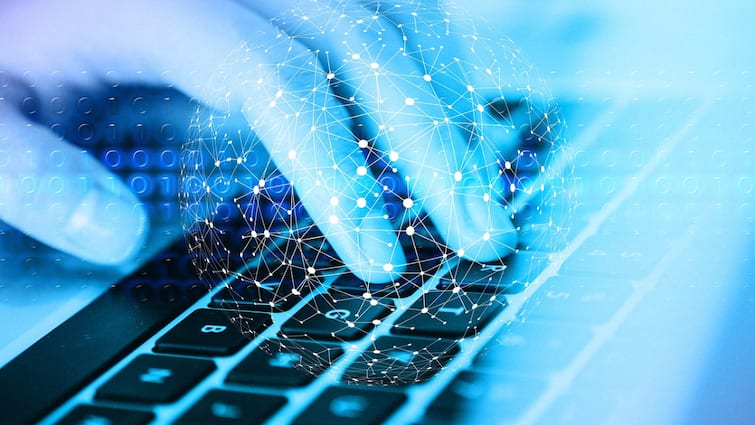By Srinivas L
Rapid technological evolution in the field of mobile, finance, social media and AI has led to instant access to various services as well as an increase in digital productivity. With the many benefits of advancements and convenience, there are also associated risks. Due to modern technologies, it has become easier for scammers and fraudsters to identify new victims and create cyberattacks.
Hackers are using AI to create deepfakes, personalised SMS, and phishing 2.0. These kinds of attacks show how traditional methods of security, single passwords, and basic hygiene are not enough to stay digitally protected. We require a solid cybersecurity system that helps identify evolving threats.
While AI has led to multiple new types of attacks, the two main trends right now are:
Deepfakes
“Deepfake” is a fairly new term. It has already victimised many celebrities. Fake AI-generated videos of these celebrities showing them in a negative light have been circulated online. But deepfakes aren’t just attacking celebrities; they are also targeting regular people like us. Deepfakes are powered by machine learning, such as generative adversarial networks (GANs) and autoencoders. These are technical terms. Deepfakes are so convincing that something fake is real. This is done using fabricated images, audio, and videos that imitate real people. These are perfectly created by technology that reconstructs expressions, movements, and speech patterns.
A real-life example of this was when a father received a ransom call, accompanied by an AI-generated video showing his child crying for help.
The accuracy and correctness of these scams are extremely concerning. Hence, there is a need to create awareness and stay protected against such attacks that look completely real and are created with such techniques.
Phishing 2.0
In the early days of cybercrime, hackers invented a system called phishing. These were simple baits placed in links and sent to a large set of people through emails and messages. If an unsuspecting user clicked on the link, the hacker could get into his system to steal data or place malware or a virus to lock the system. Phishing was still manageable to spot, as attackers would leave some grammatical errors and generic salutations. With phishing 2.0, attacks have become more hidden and personalised.
Nowadays, hackers have access to data like who is expecting a courier or has placed an online order. They send a personalised message to the receiver that the courier delivery is delayed; please click on the link to check the status. The user will not suspect that something is amiss and click on the link, ending up as a victim of a cyberattack. These attackers have been accessing our data from public profiles, breached databases, and other channels to target individuals. They are writing messages that make us believe that it is a legitimate text. Hence, a viewer can easily be tricked into following the instructions in the message and landing on a fraudulent page that AI can dynamically generate, completely personalised to the victim.
We might think we can spot the difference between AI-generated content and that we are protected from cyberattacks, but it’s not that easy.
The Threat That Follows
These new threats have the ability to create massive losses for users. Deepfakes can be used to convince a family member or friend to share their personal details or send funds. It can also be used to lure an unsuspecting person to a threatening situation. On a larger scale, it can be used to fabricate boardroom instructions, falsify evidence, or impersonate executives to authorise fraudulent transactions.
Similarly, AI-driven phishing campaigns raise the success rate of credential theft, business email compromise, and account takeovers. On a societal level, these tools accelerate disinformation, leading to wide-scale chaos.
For organisations, the loss is not only financial. Reputation, regulatory exposure, and shareholder confidence are all at risk when adversaries weaponise trust.
What we need to stay cyber safe is a layered protection model that identifies such threats. A 4-digit passcode or password is not enough anymore when all our data, money, and memories are in our mobile phones.
Let’s Move To Stronger Safeguards
While passwords are an element of security, they are only the first line. With threats becoming more sophisticated, organisations and individuals must adopt a multi-layered strategy that focuses on resilience.
- Phishing-resistant authentication: We have multi-factor solutions; two-factor authentications are other ways to stay safe. You should protect your data with these authenticator applications, as well as weekly re-logins to keep your data safe.
- Scammers use AI, but you can use it to your benefit too: AI can be used for defence against attacks as well. Ethical hackers can deploy machine learning to detect anomalous communication patterns, synthetic media, and account behaviour that indicates deviation from normal behaviour.
- Multiple checks for high-risk operations: For large financial approvals or confidential data sharing, there have to be stricter transaction checks at all points. Individuals should also treat any request for money or credential changes as high risk until independently verified.
- Education-first solutions: Awareness programs must evolve from checkbox training to simulated, contextual exercises that prepare staff to spot sophisticated impersonations and to follow secure escalation paths.
- Don’t share too much of yourself: Public exposure of personal and corporate data should be minimised, as it can be misused for attacks. Review the information accessible via public profiles and third-party services, and ensure you share limited details.
Our fight against cyberattacks is not just about learning what threats are out there but also about a more practical approach to tackling them.
A Digitally Safe World Is A Collective Responsibility
No single organisation can solve this. Governments, industry bodies, platform providers, and the security community must cooperate on standards for synthetic media detection, legal frameworks for misuse, and information sharing that raises the cost for attackers.
CYBX helps strengthen our digital frontiers with features such as QR code verification, real-time malware detection, phishing alerts, network usage monitoring, and secure calling that blocks recording or speaker misuse. In addition, insurance coverage of up to INR 10 lakhs ensures financial protection against cybercrime.
With smarter attacks, like AI-driven scams, passwords alone aren’t enough. By combining strong systems with alert, informed teams and staying prepared through smart apps, we can protect the digital trust that keeps our businesses and daily lives safe.
(The author is the Joint MD and Joint CEO of 63SATS Cybertech)
Disclaimer: The opinions, beliefs, and views expressed by the various authors and forum participants on this website are personal and do not reflect the opinions, beliefs, and views of ABP Network Pvt. Ltd.



